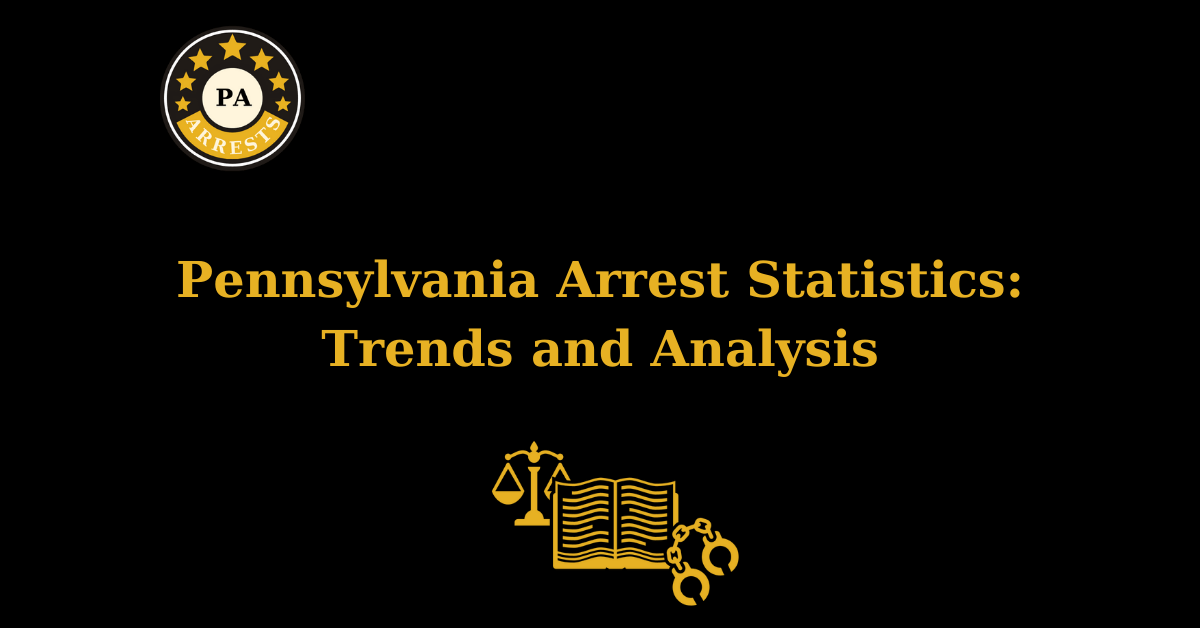Pennsylvania Arrest Statistics: Trends and Analysis

In this comprehensive analysis, we will delve deep into the statistics that shape the law enforcement landscape of the Keystone State. From the bustling metropolises to the tranquil countryside, Pennsylvania has a diverse range of communities, each with its own unique set of challenges and triumphs when it comes to maintaining public safety.
Through meticulous research and data interpretation, we aim to shed light on the patterns and trends that have emerged over the years. By understanding the factors that contribute to the ebb and flow of arrests, we can gain valuable insights into the effectiveness of law enforcement strategies and the underlying social dynamics at play. Whether you are a concerned citizen, a law enforcement professional, or a researcher seeking a deeper understanding of crime in Pennsylvania, this analysis will provide you with the knowledge and context you need to make informed decisions.
Arrest Trends in Urban Areas
Urban areas in Pennsylvania play a crucial role in shaping the state’s arrest trends. With their dense populations and unique socio-economic challenges, these communities often experience higher rates of crime. By examining the patterns and factors that contribute to arrests in urban areas, we can gain valuable insights into effective law enforcement strategies.
Exploring the Impact of Rural Communities on Arrest Trends
While urban areas may dominate the conversation around arrests, it’s essential not to overlook the impact of rural communities. Despite their tranquil landscapes, rural areas face their own set of challenges when it comes to maintaining public safety. By analyzing arrest trends in these regions, we can better understand the dynamics at play and develop targeted solutions.
Unveiling the Role of Socio-Economic Factors in Arrest Patterns
Arrest trends in Pennsylvania are not solely influenced by geographical location. Socio-economic factors also play a significant role. By examining how poverty, unemployment, and educational attainment impact arrests, we can identify areas where intervention and support are crucial for breaking the cycle of crime.
The Influence of Drug Abuse on Arrest Rates
Drug abuse continues to be a pressing issue in Pennsylvania, affecting both urban and rural communities. By analyzing arrest data related to drug offenses, we can gain insights into the prevalence and impact of substance abuse. This information can guide law enforcement agencies, policymakers, and community organizations in developing effective strategies to combat this epidemic.
Identifying Racial Disparities in Arrests
Examining arrest trends in Pennsylvania also requires acknowledging the issue of racial disparities. By analyzing data related to race and arrests, we can shed light on any imbalances within the criminal justice system. This analysis aims to foster a fair and equitable approach to law enforcement, ensuring that all individuals, regardless of race, are treated justly.
Spotlighting Success Stories and Promising Strategies
While arrest trends often highlight challenges, it is equally important to recognize success stories and promising strategies. By showcasing communities that have effectively reduced crime rates and implemented innovative approaches, we can inspire and guide others in their pursuit of safer neighborhoods. This section will delve into these success stories and explore the strategies behind their achievements.
FAQs
What is the current trend in Pennsylvania arrest statistics?
The current trend in Pennsylvania arrest statistics reveals fluctuations in crime rates across various regions. Analyzing these trends provides valuable insights into law enforcement efforts and societal dynamics. Stay informed about the latest developments in Pennsylvania’s arrest statistics to better understand the state’s evolving law enforcement landscape.
What are the most common types of arrests in Pennsylvania?
The most common types of arrests in Pennsylvania span various offenses, including drug-related charges, property crimes, assault, DUI, and theft. Understanding the prevalent arrest categories provides insights into law enforcement priorities and community safety concerns in the state.
Are there any specific areas in Pennsylvania with higher arrest rates?
In Pennsylvania, certain regions may experience higher arrest rates influenced by factors such as socio-economic conditions, population density, and law enforcement strategies. Urban areas tend to have more arrests due to increased policing and diverse socio-economic challenges, while rural regions may face different patterns shaped by their unique contexts. Analyzing crime statistics and local law enforcement reports can provide insights into specific areas with comparatively higher arrest rates in Pennsylvania.
How do Pennsylvania arrest statistics compare to the national average?
Pennsylvania’s arrest statistics are assessed against the national average, considering factors such as crime rates, demographics, and law enforcement practices. Analyzing these comparisons provides insights into the state’s law enforcement effectiveness and overall public safety.
What initiatives are in place to address the arrest trends in Pennsylvania?
Pennsylvania has implemented various initiatives to address arrest trends, focusing on community policing, diversion programs, and enhanced training for law enforcement. Community engagement initiatives foster positive relationships between police and residents, aiming to prevent crime. Diversion programs provide alternatives to incarceration, emphasizing rehabilitation for certain offenders. Additionally, ongoing training for law enforcement emphasizes de-escalation techniques and cultural competency, striving for fair and equitable policing practices. These initiatives collectively aim to reduce arrests, address root causes of criminal behavior, and improve the overall effectiveness of law enforcement in Pennsylvania.
Where can I find more detailed information on Pennsylvania arrest statistics?
For more in-depth information on Pennsylvania arrest statistics, you can refer to official sources such as the Pennsylvania State Police (PSP) website, local law enforcement agencies, or the Pennsylvania Uniform Crime Reporting (UCR) Program. Additionally, accessing court records and relevant government publications may provide detailed insights into arrest data and trends in the state.






